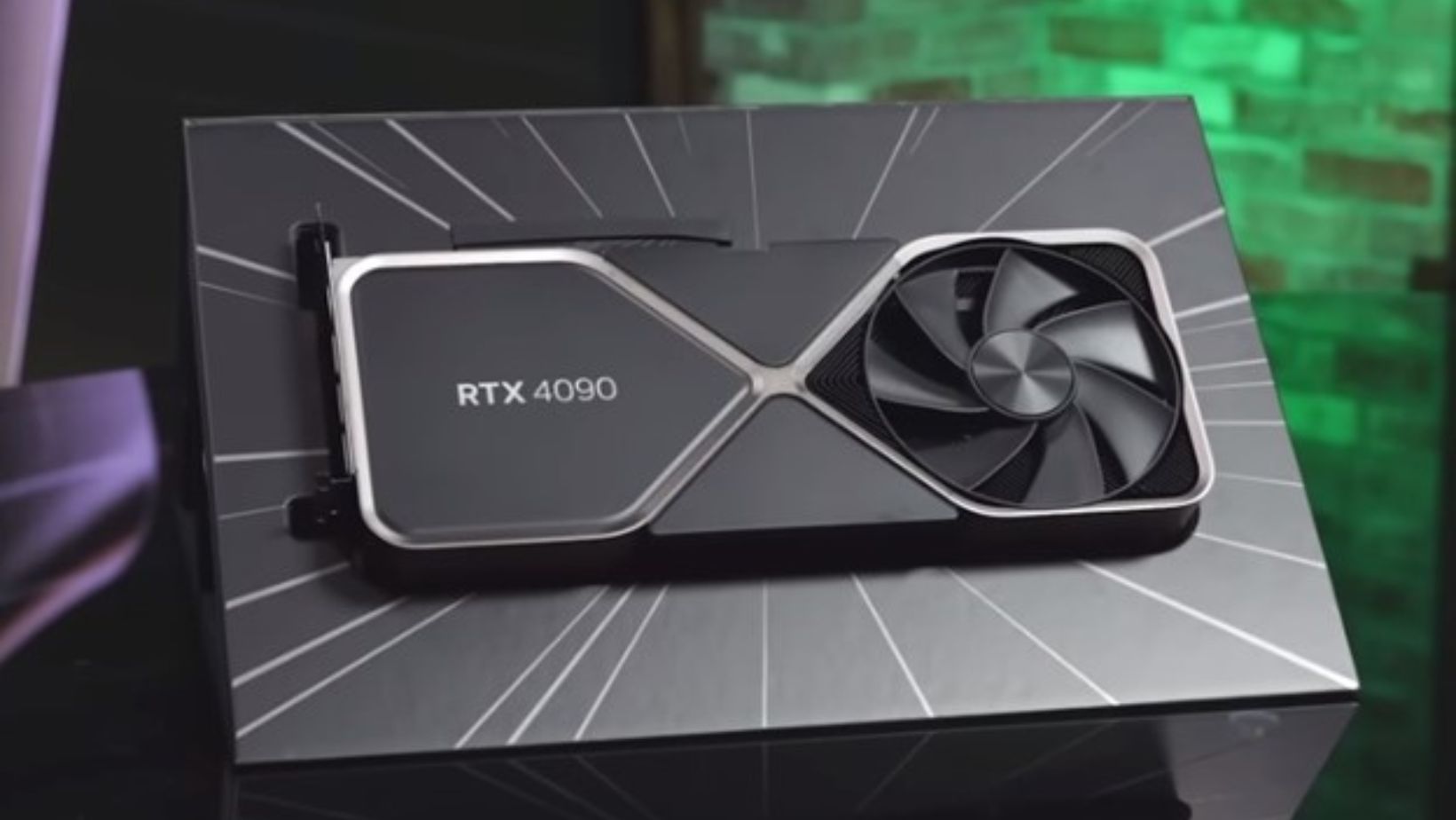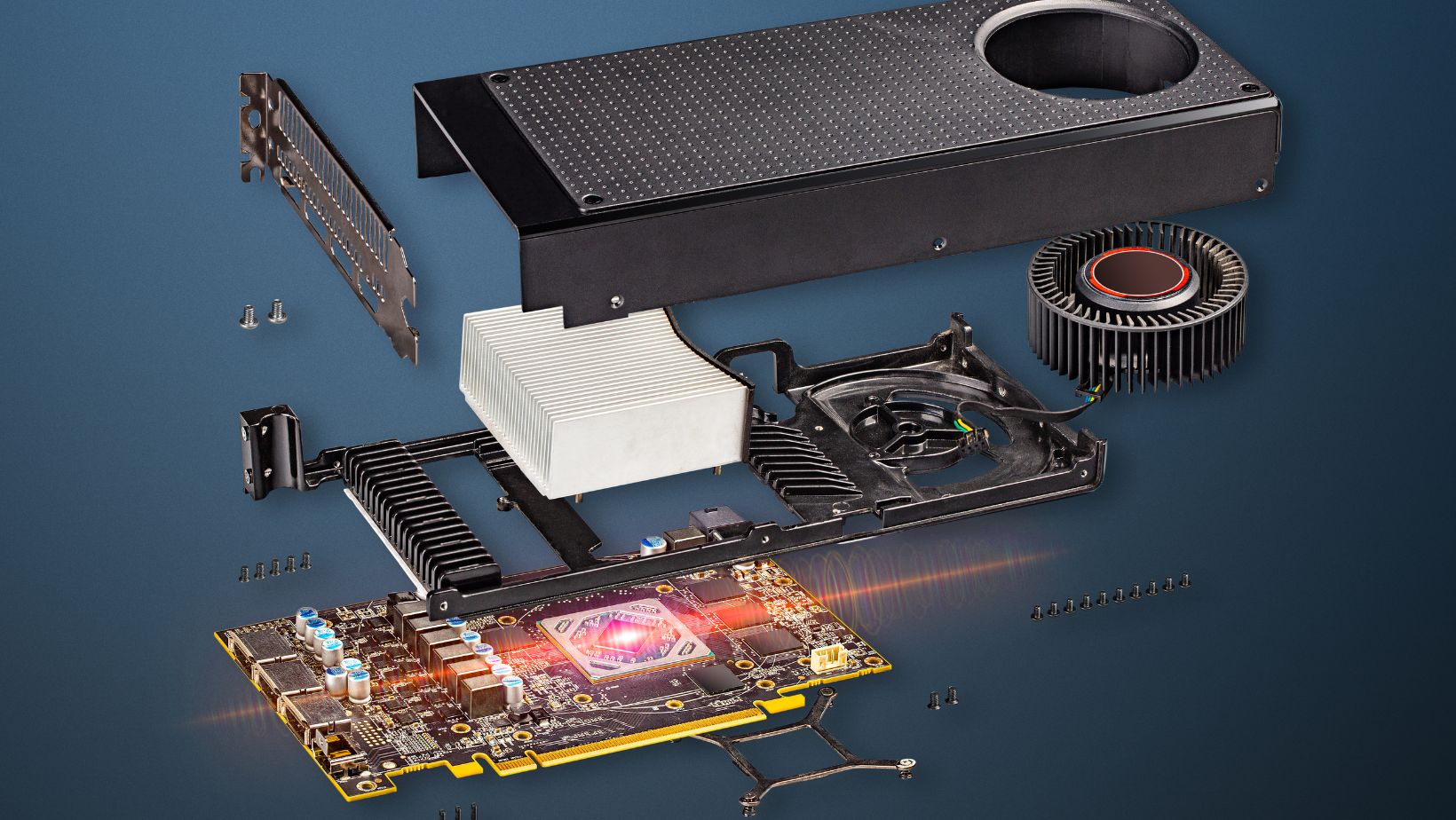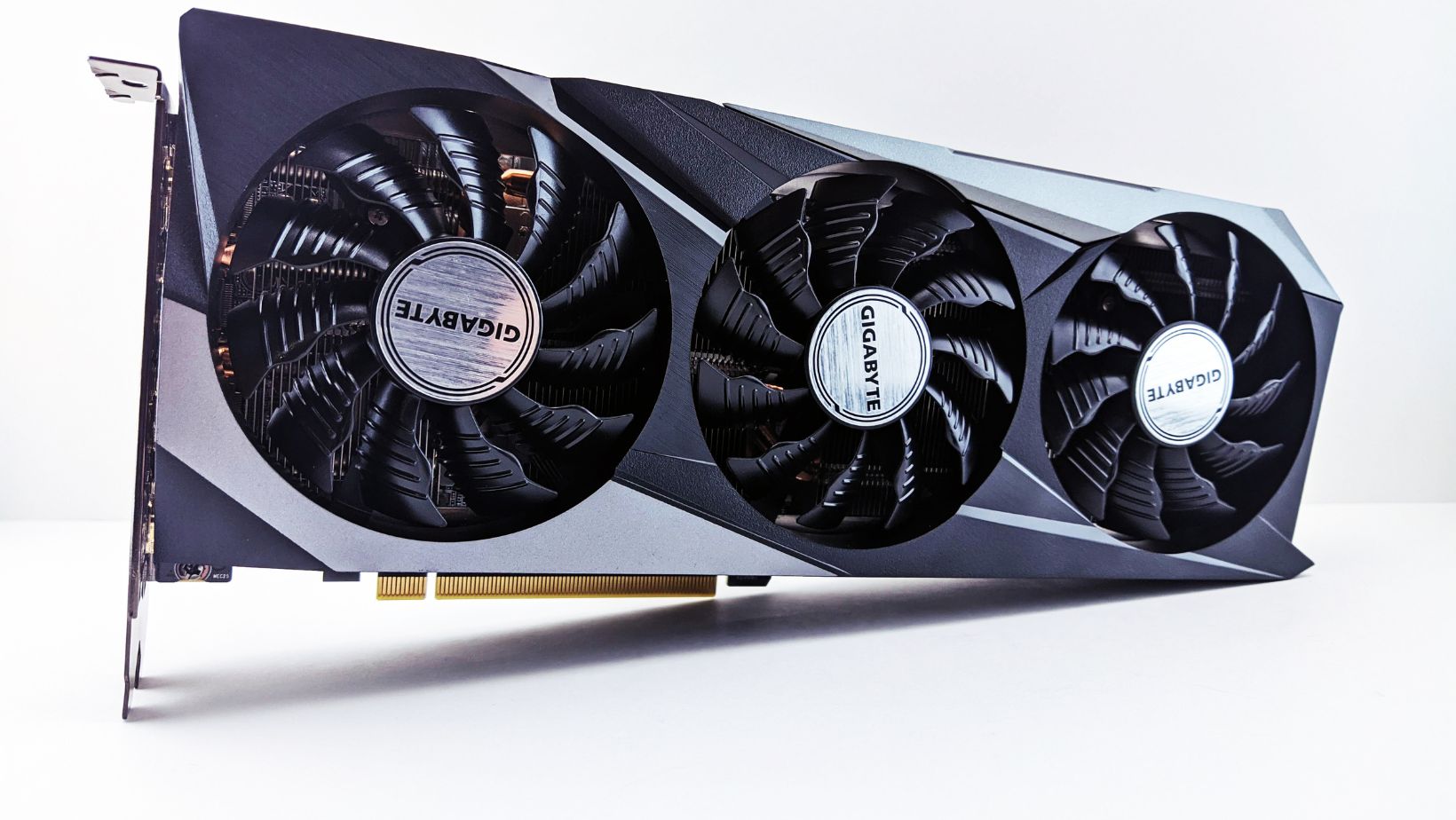 The graphics card is the heart of every computer. For users who buy or assemble a computer that’s primarily intended for the gaming segment, the graphics card will be one of the two most important components along with the CPU, while everything else will come third and fourth, and so on. Without a strong graphics card, even the best processor won’t achieve much.
The graphics card is the heart of every computer. For users who buy or assemble a computer that’s primarily intended for the gaming segment, the graphics card will be one of the two most important components along with the CPU, while everything else will come third and fourth, and so on. Without a strong graphics card, even the best processor won’t achieve much.
That’s why, in the rest of the article, we’ll tell you a little more about some of the best graphics cards that you could find (and you still can) for gaming purposes on the market last year!
Table of Contents
Toggle- The Finest of the Finest Gaming Graphics Cards for 2023: GeForce RTX 4090
- The Finest From the “Red” Team: Radeon RX 7900 XTX
- Radeon RX 7600: All in All, a Very Good Model with Good Capabilities, Except for Ray Tracing
- Nvidia GeForce RTX 4060: The Finest Budget Solution with the Latest Technological Solutions From the “Green” Team
- Intel Arc A380: One of the Most Affordable Models of Graphics Cards Intended for “Gaming” for the Year 2023
- What’s Coming Up in 2024?
The Finest of the Finest Gaming Graphics Cards for 2023: GeForce RTX 4090
NVIDIA’s GeForce RTX 4090 is intended for a group of users who want the best and most powerful, regardless of the price. It should be said that with this graphics card, NVIDIA implemented the Ada Lovelace architecture for the first time, which means that this model could represent the most powerful card that NVIDIA can offer, probably until 2025, that is, until the time when the release of the next generation of graphics cards is planned.
The RTX 4090 offers more distance between itself and the next closest NVIDIA GPU. In gaming benchmark estimates, it’s 35% faster overall than the RTX 4080. It’s also 51% faster than AMD’s best RX 7900 XTX, even though it also costs about 60% more.
But before buying this model, some things you must be aware of. First off, you really need a high-refresh-rate 4K monitor to get the most out of the RTX 4090. At 1440p, its advantage over the 4080 shrinks to 23%, and it’s only 13% at 1080p, and that includes some demanding DXR games. The advantage over the RX 7900 XTX also drops to just 24% at 1080p.
Not only do you need a high-resolution, high-refresh-rate monitor, but you’ll also want the fastest processor possible so that the processor doesn’t limit you or bottleneck you. But if you want the best and the most powerful not only from NVIDIA but in general, be prepared to put your hand deep into your pocket. One such graphics card will cost you between $1,549 and $1,999. Don’t be appalled to see this price. NVIDIA’s GeForce established itself as the world’s most advanced gaming solution and gaming technology thanks to its graphics cards. After all, playing at 144 FPS or more GeForce provides is the basis for competitive games, including PLAYERUNKNOWN’S BATTLEGROUNDS, Rainbow Six Siege, and the new Call of Duty: War Zone. All these eSports-embraced titles, whose tournaments are loved by numerous pro gamers, gaming aficionados, and bettors on eSports at the best WebMoney bookmakers in 2024, rated at Bookmaker Expert, demand maximum frame rates.
Advantages:
- The fastest graphics card on the market
- Great for 4K and maybe 8K gaming
- Excellent even for Ray Tracing
- DLSS and DLSS 3
- More than enough working memory for any activity
Disadvantages:
- Very high price
- A fast processor and a large PSU are required
The Finest From the “Red” Team: Radeon RX 7900 XTX
AMD’s Radeon RX 7900 XTX is considered AMD’s fastest graphics card and is near the top of the list, but of course, it comes with a generational jump in price. With an official price of $999.99, the cheapest models now start at $881.99, and the offer has long reached the demand. There’s good reason for the demand, as the 7900 XTX comes with AMD’s latest RDNA 3 architecture.

This gives the 7900 XTX a lot more computing potential, and you, as the user, also get 33% more memory and bandwidth. Compared to the RX 6950 XT, on average, the new GPU is 40% faster at 4K, although this drops to 30% at 1440p and just 24% at 1080p. It also provides a performance boost without a dramatic increase in power consumption.
AMD’s graphics card is still a great solution for anyone who doesn’t care that much about RT or Ray Tracing, and when you see the huge performance hit for the often relatively slight gains in image authenticity, we can understand why this option isn’t that important to many. However, the number of games with RT support continues to grow, and most of them also support NVIDIA’s DLSS technology, something that AMD hasn’t completely opposed, regardless of the fact that in some situations, FSR2 can partially come close to what the “green” team designed.
But if you want the best DXR/RT experience, NVIDIA still wins. However, if RT isn’t that important to you, and you still want to own a very high-quality and powerful graphics card and at the same time want to save money because this model is still much more affordable compared to NVIDIA’s model, in that case, the RTX 7900 XTX could be the graphics card the card you’re looking for.
Advantages:
- Excellent overall performance
- Lots of VRAM and cache
- Great for non-Ray Tracing workloads
- Good SPECviewperf scores
Disadvantages:
- Weaker machine learning capabilities, especially compared to what the GeForce RTX 4090 offers
- Still not very affordable
Radeon RX 7600: All in All, a Very Good Model with Good Capabilities, Except for Ray Tracing
The Radeon RX 7600 and its Navi 33 GPU replaced the parts of the previous generation Navi 23 with a few additional features. The performance ends up being only slightly faster than the RX 6650 XT while consuming about 20W less power for a small price increase.
Extras include superior performance using artificial intelligence, AV1 hardware encoding and decoding, and DisplayPort 2.1 UHBR13.5 outputs. However, the prices have dropped a bit since this model first hit the market. The specs are also similar, with the same 8GB GDDR6 and 128-bit memory interface. Both the 6650 XT and the RX 7600 also use 18 Gbps memory, so bandwidth also remains the same.
Gaming performance tests showed that the RX 7600 outperformed the RX 6650 XT by 4% at 1080p and only 1% at 1440p at the highest settings. There’s almost no noticeable difference, although there are a few deviations: Metro Exodus Enhanced performance was much better on the 7600, while Forza Horizon 5 performance was worse, but this may be due to the optimization of the game by the development team.
All in all, if you’re looking for a very competent gaming graphics card and want to save as much as possible, definitely consider AMD’s RX 7600 model. The current price is $269.
Advantages:
- Great for playing games at maximum settings at 1080p resolution, plus rasterization
- AV1 and DP2.1 support enabled
- All in all, a very good ratio of invested and received
Disadvantages:
- Only 8GB of VRAM
- Not good for Ray Tracing
Nvidia GeForce RTX 4060: The Finest Budget Solution with the Latest Technological Solutions From the “Green” Team
With the launch of the RTX 4060, NVIDIA came close to putting an end to the generation of desktop graphics cards based on the Ada Lovelace architecture. A desktop version of the 4050 model is still potentially in the works, and we could reportedly see a new “Super” variant of the RTX 20 series.
Since it belongs to the affordable segment, this graphics card certainly shows greater limitations compared to those at the top. NVIDIA decided to reduce the memory interface to only 128 bits, which in turn limits the memory capacity options. NVIDIA could make a 16GB card if it really wanted to, but 8GB is the standard configuration, and we don’t expect anything else; only the 4060 Ti 16GB has the dual VRAM option.
The 4060 class cards also have an x8 PCIe interface, although, in practice, this should not matter. The good news is that, as promised, performance is faster than the previous generation RTX 3060 by around 20% at 1080p and 1440p. There are edge cases in some games, meaning 4K at max settings, where 12GB on the 3060 can gain an advantage, but at that point, the performance is already far below an acceptable level. As an example, Borderlands 3 ran at 26.5fps on the 4060 versus 28.9fps on the 3060 at 4K max settings; neither is a great experience, although the 3060 is technically faster.

Of course, there are other advantages: you get all the latest features of the Ada Lovelace architecture, including support for DLSS 3. Also, power consumption is only 115 W for the reference model and usually won’t exceed 125W on overclocked cards. An alternative view is that this is an upgraded RTX 3050, with the same power consumption and better performance, but also with a higher price ($299).
Advantages:
- It achieves excellent performance at 1080p
- Energy-efficient and quiet graphic card
- Faster and more affordable compared to RTX 3060
Disadvantages:
- There isn’t too much difference between this and the 4050 model
- Only 8GB of VRAM
Intel Arc A380: One of the Most Affordable Models of Graphics Cards Intended for “Gaming” for the Year 2023
Arc A380 is definitely one of Intel’s best solutions for graphics cards with separate memory. Although in the beginning, it was known as a graphics card that showed a lot of problems, including incompatibility with games, rendering errors, and performance errors, a year later, many of these problems have been solved thanks to software updates. If you’re looking for a potentially interesting HTPC graphics card and are willing to compromise, then this could be the model for you.
The Alchemist architecture was the first to add support for AV1 encoding and decoding, and the encoding quality is right on par with NVIDIA Ada, with AMD RDNA 3 lagging by a decent margin. The Arc A380 is just as fast in encoding as the more powerful A770.
However, with such a low price for a graphics card intended for the gaming segment, you’ll naturally have to be prepared for many compromises. The A380 and RX 6500 XT are in the same class, but the RX 6600 is roughly twice as fast. However, it lacks AV1 support and is quite expensive. Ray Tracing is also a bonus here and not something players should rely on. But if you want a gaming graphics card from Intel’s “kitchen” and have no problem with compromises, given it’s weak for gaming compared to other GCs on the list, take a look at this model, whose price ranges from $119.49 to $139.99.
Advantages:
- Excellent video encoding quality
- A very affordable model
- It generally works well at 1080p resolution
Disadvantages:
- Not an overly fast graphics card
- The possibilities are limited
What’s Coming Up in 2024?
This year, NVIDIA made very modest announcements at CES, the biggest technology trade show in the world, including the absence of mobile GPUs, the company’s flagship product for launch. The California-based company did release several upgraded Super models for its desktop cards, as well as improvements and a Day Pass for its cloud gaming service, GeForce Now. It also said that iStock will now offer models drilled on licensed Getty photos with NVIDIA’s capabilities as part of its generative AI offerings. But let’s focus on graphics cards.
The $600 RTX 4070 Super, $800 RTX 4070 Ti Super, and $1,000 RTX 4080 Super are the three new GeForce graphics cards that are planned. The 4070 Ti and 4080 Super-models supersede their non-Super counterparts, although the standard 4070 will still be available for $550. Only partner cards will be available; there won’t be an NVIDIA Founders Edition card for the 4070 Ti, but there’ll be one for the other two. All of them are scheduled to ship before the end of January. However, their releases are spaced out by one week.
Be mindful that there won’t be a major performance boost over DisplayPort 1.4 or a migration to DisplayPort 2.1. Every version that is labeled as “Super” is built around current GPU chipsets, meaning that additional cores have been made available and rates are somewhat raised.
Certain things really do stick out. For example, the 4070 Super consumes 220 watts compared to the 4070’s 200W, which goes beyond the point at which either one or two eight-pin connections are required (the 4070 had an additional optional connection for overclocking). For really budget-conscious customers in that well-liked price bracket, that is one of the reasons the RTX 4070 is still available for purchase, along with its reduced price.






